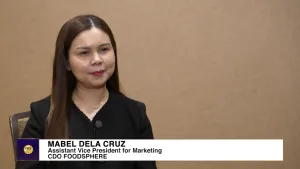Philippine retail shows recovery and embraces omni-channel strategies
The Philippine Retail Association says 113 million population assures industry growth in the short to medium term.
The Philippine retail industry is evolving as consumer behaviour shifts in the face of eased pandemic restrictions, wider acceptance of e-commerce, the omni-channel shopping experience, and the impact of the amended Retail Trade Liberalization Act on local businesses.
These insights were shared by Philippine Retail Association (PRA) Chairman Paul Santos when interviewed by Retail Asia on the sales performance seen in the country.
According to Santos, the Philippine retail sector performed better in 2022 than in 2021 and 2020, mainly due to lifted movement restrictions, although anecdotal evidence suggests that 2022 figures are still below the pre-pandemic numbers in 2019.
Citing the data, he said household spending increased by 5.1 to 5.5% in 2022; and though that is lower than the projection at about 7%, Philippine retailers are optimistic.
“There seems to be some more reason to be hopeful because household spending… increased over the previous year,” he said. “Moving on to 2023, they have reasons to be optimistic for a better sales performance this year, and in the years ahead.”
Shift in consumer behaviour
Santos highlighted the significant shift in consumer behaviour, with consumers becoming more accepting of e-commerce during the pandemic.
“Beginning in 2020, people had no other means to go out and shop except try e-commerce,” said the PRA chairman, who noted an accelerated acceptance of this mode of transaction.
As a result, Philippine retailers are increasingly combining the convenience of e-commerce with in-store shopping, adopting omni-channel strategies to cater to the changing needs of consumers.
“It’s a cliche when people say ‘omni-channel,’ but this is the direction that Philippine retailers, I guess, are being dragged into.” Santos said. “If they didn’t believe in it then… they’re being dragged into it right now.”
Adopting tech solutions
In terms of emerging trends among retail strategies, Santos noted that many retailers have been adopting technological solutions to improve their back-office operations.
Again, with the pandemic, the need to make these processes available outside offices led to increased automation and the adoption of cloud solutions.
“Probably, the greatest change among retailers, apart from the increasing pace of automation in the back office, is the adoption of cloud solutions to transfer as many of these processes to the cloud as possible,” Santos said.
Retail trade liberalisation
Regarding the impact of the amended Retail Trade Liberalization Act on the Philippine retail landscape, Santos explained that it has not yet significantly changed the situation.
The amended law eases the requirements for foreign retailers to enter the Philippine domestic market. However, it has not yet changed the retail landscape because foreign retailers would still need to assess whether the Philippine retail economy and consumers could support their goods and services before investing.
Santos pointed out that foreign retailers have been entering the Philippine market since the original law was implemented in 2000. He believes that the current floor amount for investing in retail will attract small and medium-scale foreign retailers rather than large ones.
To stay competitive, the PRA chairman emphasized that local businesses should leverage their familiarity with the Philippine market, tastes, and quirks. He warned that if domestic retailers are not responsive to the wants and needs of their market, they will succumb to competitive pressure from foreign businesses.
Santos noted that foreign businesses “have the confidence to operate beyond their comfort zones” partly because their brand values and brand attributes are what their target market wants even in foreign territories like the Philippines.
What keeps domestic retailers ahead is that “they have the first mover advantage.” Still, Santos warned: “Being first gives them some advantage. But if they just sit on their hands, this advantage will melt into nothing."
Industry growth assured
Looking ahead, Santos predicts that the Philippine retail industry will continue to grow due to the country’s growing population, despite challenges like inflation and political and economic uncertainties.
“(With) 113 million people in the country, retail growth is assured, I think, in the near to medium term,” he said. “The only clouds that we see on the horizon are basically inflation and political and economic uncertainties brought about by the war in Ukraine (with Russia).”
As such, retailers must be flexible and resilient, adapting to supply chain disruptions and embracing omni-channel strategies to compete effectively in the coming years, Santos concluded.



















 Advertise
Advertise






